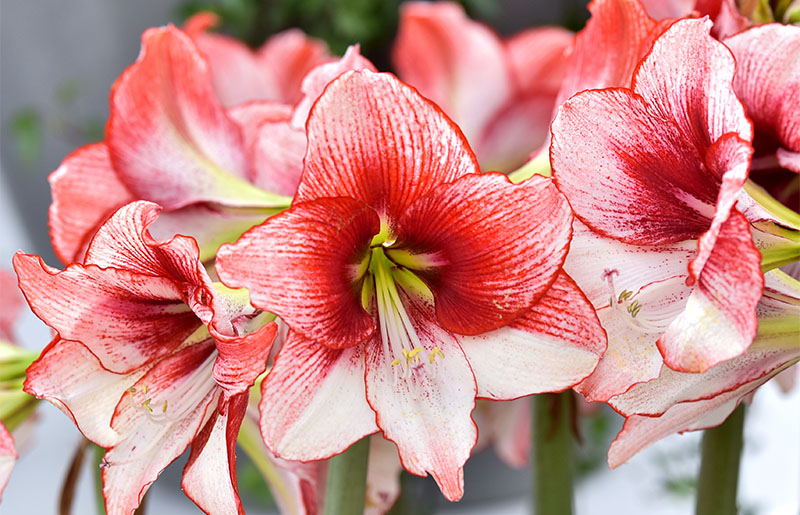
HCMG Offers April Gardening Tips
|
“Flowers always make people better, happier, and more helpful;
they are sunshine, food and medicine for the soul”
– Luther Burbank
|
I find myself smiling as I walk through my yard. It seems like each day something catches my eye. The lantana and plumeria are coming back from the December cold, the bluebonnets are blooming, amaryllis flowers grace the table, the bean and tomato plants are growing bigger each day. The garden truly does make me happier.
Speaking of bluebonnets, the experts at the Lady Bird Johnson Wildflower Center are expecting a good showing this year. Early April is a great time for bluebonnet viewing.
Our weather so far this year has been a little hotter and drier than historic averages. Predictions suggest this is likely to continue. Keep a good layer of mulch and as always, check for “too wet, too dry, just right” and water accordingly. Remember a good, deep watering is better than frequent, light watering. April is a good time to evaluate your irrigation system and make any needed repairs.
Perennials and Ornamental Grasses
- Remove spent blooms regularly to keep plants attractive and avoid using plant energy "going to seed".
- Finish fertilizing established perennials and ornamental grasses.
- Shear back by 1/3 if plants are getting leggy. m Divide chrysanthemums late April, early May.
Annuals
- Plant warm-season bedding plants.
- For cool season annuals, tidy up beds, remove spent flowers, pinch back lanky growth, fertilize, water well and enjoy extended flowering time. Flowers of many cool season annuals are edible.
- As weather warms, annuals in containers will need more frequent watering. Fertilize annuals in containers once per week at 1/2 recommended rates.
Bulbs
- Two of my favorites are Louisiana irises (a rhizome) and Amaryllis. Louisiana irises should be at their peak in April.
- Watch for canna leaf rollers and treat as needed.
- Continue to plant gladioli bulbs every 2 weeks from Jan through May for successive blooms. When cutting flowers, leave at least four green leaves on the lower part of the stem.
Roses
- Spray for blackspot, powdery mildew, aphids, etc., should continue every 7 to 10 days through November. Continue to fertilize monthly.
Shrubs/Trees
- Newly planted shrubs do not have established root systems and may need supplemental watering. Moisten soil 4 to 6 inches down.
- Prune and fertilize spring flowering shrubs like azaleas after they finish flowering.
- For azaleas and other acid loving plants, it is a good time to check and adjust soil acidity.
Lawns
- The lawn can be fertilized after a second mowing of actively growing grass. Note if you have weeds in the turf, bag and compost the clippings from these first two mowings.
- Broadleaf weed killer can be used in April, but check the label. St. Augustine can be sensitive to weed killer at warmer temperatures.
Groundcovers and Vines
- Transplant, divide ground covers. Fertilize if you didn't do in March.
Vines
- Prune spring vines after they finish flowering. Snip back, wind vines through support to keep looking neat.
Edibles (vegetables, herbs, berries, fruits)
- See the following link for recommended planting times: Harris County Vegetable Planting Guide
- Get your tomatoes planted so you can harvest before hot weather causes them to stop setting fruit.
- Cool season vegetables are likely to be done in April.
Source: Harris County Master Gardeners Urban Dirt Newsletter (April 2023 Edition)
About Urban Dirt
Each month, Harris County Master Gardeners publishes an informative, resourceful newsletter entitled "Urban Dirt". This article was derived from the April 2023 edition. To read the April 2023 edition of this newsletter, click the button below.
URBAN DIRT - april 2023 EDITION






